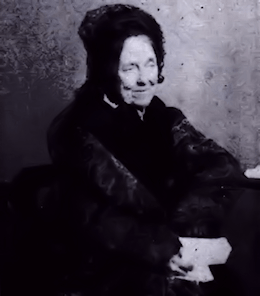Textus Receptus Bibles
Julia E. Smith Translation 1876
| 35:1 | And Elihu will answer and say, |
| 35:2 | Didst thou reckon this for judgment thou saidst, My justice is above God? |
| 35:3 | For thou wilt say, What shall it profit to thee? what shall I profit from my sin? |
| 35:4 | I will turn back words to thee, and thy companions with thee. |
| 35:5 | Look upon the heavens and see; behold the clouds, they were high above thee. |
| 35:6 | If thou sinnedst, what wilt thou do against him? and thy transgressions were multiplied, what wilt thou do to him? |
| 35:7 | If thou wert just, what wilt thou give to him? or what shall he take from thy hand? |
| 35:8 | Thy injustice to a man as thou: and thy justice to the son of man. |
| 35:9 | From the multitude of oppressions they will cry out: they will cry out from the arm of the many. |
| 35:10 | And not saying, Where is God making me? he gave songs in the night |
| 35:11 | And who teacheth us from the cattle of the earth, and he will make us wise above the birds of the heavens? |
| 35:12 | Then they will cry, and he will not answer from the face of the pride of the evil. |
| 35:13 | Also God will not hear vanity, and the Almighty will not look upon it |
| 35:14 | Also if thou shalt say thou wilt not see him, judgment is before him, and thou shalt wait for him. |
| 35:15 | And now that it is not, he reviewed his anger, and he knew not in great transgression. |
| 35:16 | And Job will open his mouth in vain; he will bind together words without knowledge. |

Julia E. Smith Translation 1876
The Julia Evelina Smith Parker Translation is considered the first complete translation of the Bible into English by a woman. The Bible was titled The Holy Bible: Containing the Old and New Testaments; Translated Literally from the Original Tongues, and was published in 1876.
Julia Smith, of Glastonbury, Connecticut had a working knowledge of Latin, Greek and Hebrew. Her father had been a Congregationalist minister before he became a lawyer. Having read the Bible in its original languages, she set about creating her own translation, which she completed in 1855, after a number of drafts. The work is a strictly literal rendering, always translating a Greek or Hebrew word with the same word wherever possible. Smith accomplished this work on her own in the span of eight years (1847 to 1855). She had sought out no help in the venture, even writing, "I do not see that anybody can know more about it than I do." Smith's insistence on complete literalness, plus an effort to translate each original word with the same English word, combined with an odd notion of Hebrew tenses (often translating the Hebrew imperfect tense with the English future) results in a translation that is mechanical and often nonsensical. However, such a translation if overly literal might be valuable to consult in checking the meaning of some individual verse. One notable feature of this translation was the prominent use of the Divine Name, Jehovah, throughout the Old Testament of this Bible version.
In 1876, at 84 years of age some 21 years after completing her work, she finally sought publication. The publication costs ($4,000) were personally funded by Julia and her sister Abby Smith. The 1,000 copies printed were offered for $2.50 each, but her household auction in 1884 sold about 50 remaining copies.
The translation fell into obscurity as it was for the most part too literal and lacked any flow. For example, Jer. 22:23 was given as follows: "Thou dwelling in Lebanon, building as nest in the cedars, how being compassionated in pangs coming to thee the pain as in her bringing forth." However, the translation was the only Contemporary English translation out of the original languages available to English readers until the publication of The British Revised Version in 1881-1894.(The New testament was published in 1881, the Old in 1884, and the Apocrypha in 1894.) This makes it an invaluable Bible for its period.